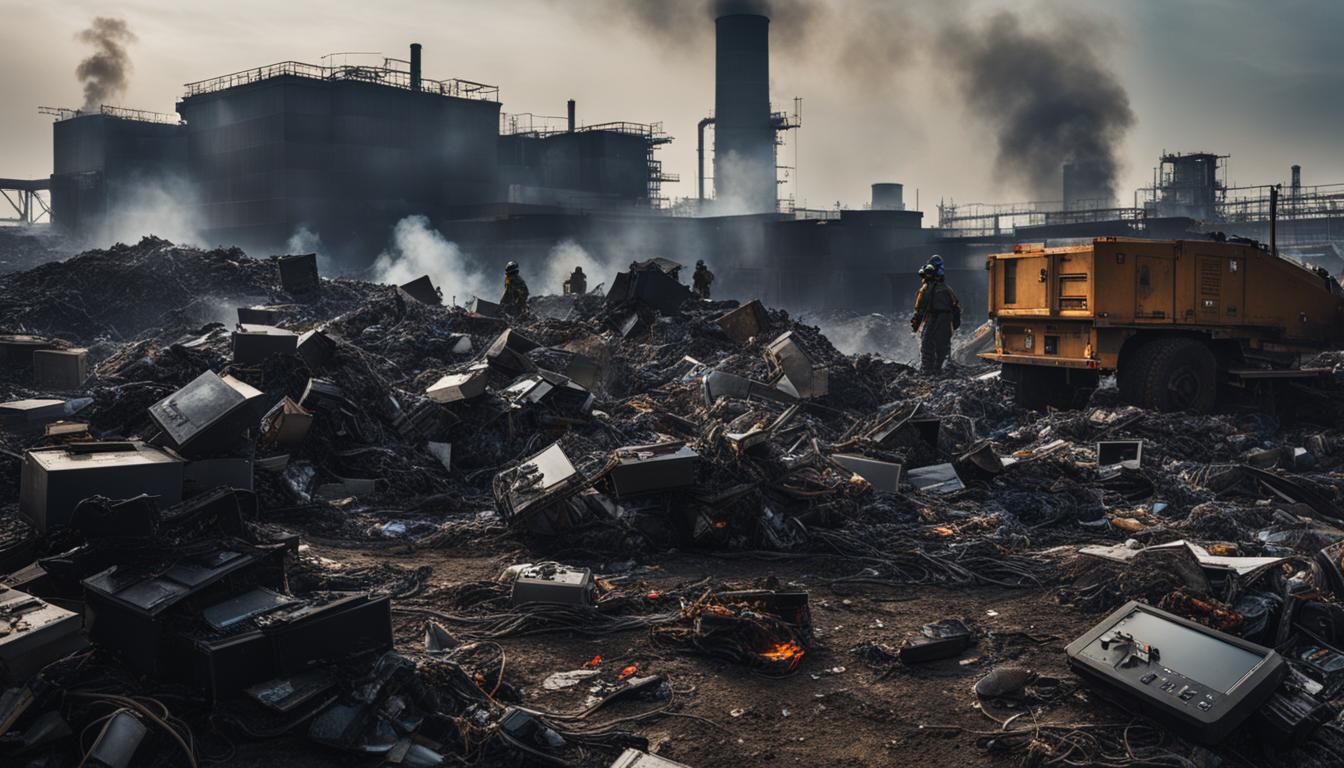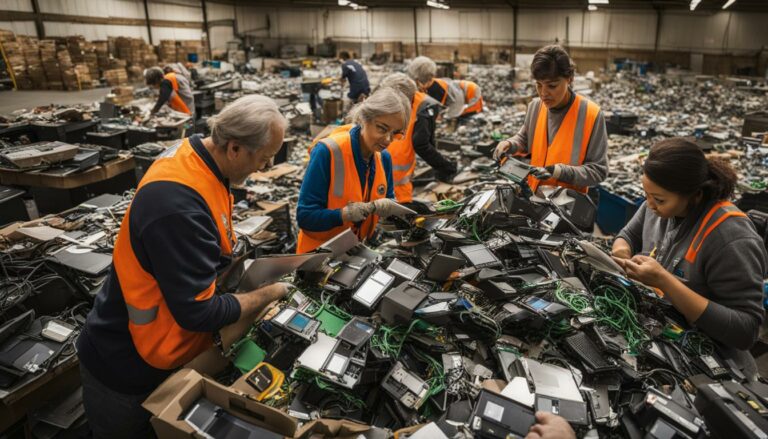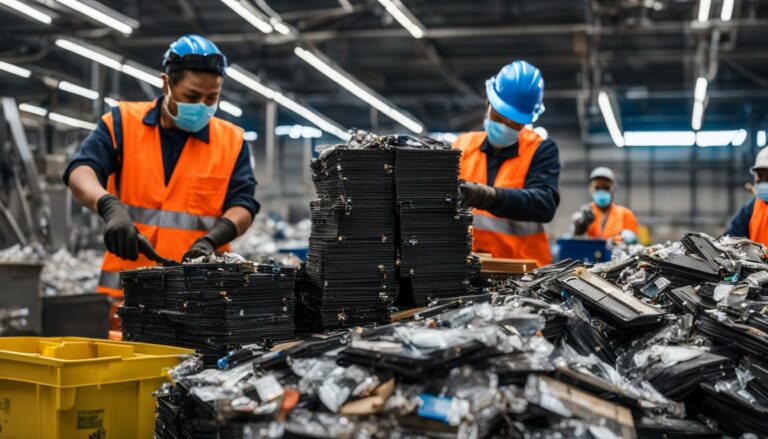Reimagining IT: From E-waste Challenges to Opportunities
Today’s digital age has led to a growing reliance on electronic devices, resulting in a significant amount of electronic waste, or e-waste. The extraction of raw materials, manufacturing process, and rapid upgrading cycle of devices contribute to the environmental footprint of electronic devices. However, businesses have the opportunity to transform the e-waste challenge into opportunities by adopting sustainable practices. The development of solutions like ChromeOS Flex by Google Chrome Enterprise extends the lifespan of devices, reduces e-waste generation, and decreases environmental harm. By embracing a circular economy approach, businesses can design products that are energy-efficient, optimize system longevity, and promote the collection and recycling of devices at the end of their life.
Key Takeaways
- Electronic waste, or e-waste, is a significant environmental challenge in today’s digital age.
- Businesses can turn the e-waste challenge into opportunities by adopting sustainable practices.
- ChromeOS Flex by Google Chrome Enterprise is a solution that extends the lifespan of devices and reduces e-waste generation.
- A circular economy approach allows businesses to design energy-efficient products and promote device recycling.
- By embracing sustainable e-waste management, businesses can contribute to environmental conservation and achieve their sustainability goals.
The Magnitude of the E-waste Problem
The global demand for electronic devices has reached unprecedented levels, resulting in the generation of enormous amounts of e-waste. The proliferation of mobile phones, in particular, has contributed significantly to this growing problem. In 2021 alone, there were over 15 billion mobile phones worldwide, and this number is projected to increase to over 18 billion by 2025.
However, the alarming reality is that only a fraction of e-waste undergoes formal recycling, with the majority ending up in landfills. This not only exacerbates the strain on already limited landfill space but also poses serious environmental and health risks. The improper disposal of electronic devices contaminate the land with toxic substances and pollutants, polluting both the soil and water sources in the vicinity.
Policymakers and organizations have started to address this issue by implementing initiatives such as the UN’s Global E-Waste Monitor, which tracks e-waste statistics worldwide. Additionally, the European Union has introduced “right to repair” standards to promote longer device lifespans and encourage recycling. While these efforts are commendable, there is still much work to be done to combat the mounting e-waste problem.
| Year | Number of Mobile Phones (in billions) |
|---|---|
| 2021 | 15 |
| 2025 (projected) | 18 |
The Environmental and Health Impacts of E-waste
Improper disposal and recycling of e-waste have severe environmental and health impacts. E-waste contains hazardous chemicals such as lead, mercury, flame retardants, and persistent organic pollutants. When e-waste is not properly recycled, these substances contaminate landfills, polluting both the land and water supply.
Workers involved in the recycling process are exposed to repetitive stress injuries and harmful airborne contaminants. E-waste treatment often occurs in developing countries with inadequate safety regulations, resulting in adverse health effects in nearby communities.
To mitigate these risks, companies need to adopt techniques like downstream recycling vendor due diligence, extended producer responsibility programs, and improved internal standards to ensure environmentally sound e-waste management.
The Environmental Impacts of E-waste
E-waste contains hazardous chemicals such as lead, mercury, flame retardants, and persistent organic pollutants. When e-waste is not properly recycled, these substances contaminate landfills, polluting both the land and water supply.
Health and Safety Impacts of E-waste
Workers involved in the recycling process are exposed to repetitive stress injuries and harmful airborne contaminants. E-waste treatment often occurs in developing countries with inadequate safety regulations, resulting in adverse health effects in nearby communities.
Recycling as a Solution
Proper recycling of e-waste is crucial to minimize its environmental and health impacts. By implementing downstream recycling vendor due diligence, companies can ensure that e-waste is managed in an environmentally sound manner.
Extended producer responsibility (EPR) programs can also play a significant role in e-waste recycling. These programs hold manufacturers accountable for the entire lifecycle of their products, including their end-of-life disposal. By implementing EPR, companies can promote the collection and recycling of e-waste, reducing its environmental and health impacts.
Moreover, improving internal standards and safety regulations within the e-waste recycling industry is essential to protect the health and safety of workers involved in the process. Adequate training, proper equipment, and adherence to safety protocols can help mitigate the risks associated with e-waste recycling.
Table: Comparison of Hazardous Substances in E-waste
| Type of Hazardous Substance | Effect on the Environment | Effect on Human Health |
|---|---|---|
| Lead | Contaminates soil and water, bioaccumulates in plants and animals | Impairs neurological development, damages kidneys, cardiovascular system, and reproductive system |
| Mercury | Poisons aquatic ecosystems, accumulates in fish, enters the food chain | Causes neurological damage, affects immune system, harms fetal development |
| Flame Retardants (BFRs) | Persists in the environment, bioaccumulates in organisms | Disrupts endocrine system, impairs thyroid function, affects reproductive health |
| Persistent Organic Pollutants (POPs) | Persists in the environment, bioaccumulates in organisms, biomagnifies in food chains | Causes cancer, impairs immune system, affects reproductive health |
Transforming E-waste Management
In order to address the e-waste challenge effectively, businesses need to adopt a holistic and sustainable approach to e-waste management. This involves embracing the principles of the circular economy, where waste is seen as a valuable resource that can be reused, recycled, or repurposed. By implementing these strategies, companies can not only reduce their environmental impact but also tap into the growing e-waste management market and achieve their sustainability goals.
One key aspect of transforming e-waste management is investing in advanced recycling technologies. These technologies enable the efficient and environmentally friendly processing of electronic waste, extracting valuable materials for reuse while minimizing the generation of hazardous by-products. By incorporating these technologies into their operations, businesses can ensure that e-waste is handled responsibly and that valuable resources are recovered.
Another crucial element in transforming e-waste management is compliance with legislation. Governments around the world are enacting stricter regulations regarding e-waste disposal and recycling. By complying with these regulations, businesses can avoid legal penalties and demonstrate their commitment to responsible e-waste management. Additionally, compliance with legislation helps create a level playing field for businesses and promotes fair competition in the e-waste management industry.
The Importance of Consumer Education
In order to truly transform e-waste management, consumer education is essential. Many people are unaware of the environmental and health impacts of improper e-waste disposal or the importance of recycling electronic devices. By educating consumers about the value of proper e-waste management and the benefits of recycling, businesses can foster a culture of sustainability and encourage individuals to take action.
Value recovery is also a key aspect of transforming e-waste management. Companies can explore innovative ways to recover value from discarded electronic devices, such as refurbishing and reselling them or extracting valuable components for reuse. By leveraging these value recovery opportunities, businesses can not only reduce e-waste but also generate additional revenue streams and contribute to a more sustainable economy.
| Benefit | Description |
|---|---|
| Economic Growth | The e-waste management market offers significant opportunities for economic growth, with the potential for job creation and innovation. |
| Resource Conservation | By recycling and reusing electronic devices, valuable resources such as precious metals can be conserved, reducing the need for extraction and minimizing environmental impact. |
| Social Responsibility | Adopting sustainable e-waste management practices demonstrates a company’s commitment to social responsibility and can enhance its reputation among stakeholders and consumers. |
Conclusion
The escalation of e-waste presents a pressing concern in the face of climate change and sustainable development. However, it also offers a significant opportunity for businesses to adopt sustainable practices and contribute to a circular economy. By reimagining device management and prolonging the lifespan of hardware, companies can reduce e-waste generation and mitigate environmental harm.
Strategic initiatives such as ChromeOS Flex by Google Chrome Enterprise demonstrate the potential for emissions savings, reduction in e-waste, and improved device longevity. The adoption of such solutions is crucial in achieving sustainable e-waste management and addressing the challenges posed by climate change.
Transforming the e-waste crisis into opportunities for environmental conservation, economic growth, and societal progress requires a collective effort from businesses, policymakers, and consumers. By embracing sustainable e-waste management practices, businesses can not only contribute to a greener future but also tap into the growing e-waste management market. It is imperative for companies to prioritize circular economy principles, comply with legislation, and increase consumer education to ensure a sustainable and responsible approach to e-waste management.
FAQ
What is e-waste?
E-waste refers to electronic waste, which includes discarded electronic devices such as mobile phones, computers, televisions, and other electronic equipment.
Why is e-waste a problem?
E-waste is a problem due to its environmental and health impacts. Improper disposal and recycling of e-waste can contaminate the environment with toxic substances and pose threats to ecosystems and human health.
How much e-waste is generated globally?
In 2021, there were over 15 billion mobile phones worldwide, and this number is projected to increase to over 18 billion by 2025. The global demand for electronic devices has led to the generation of enormous amounts of e-waste.
What are the environmental and health impacts of e-waste?
E-waste contains hazardous chemicals such as lead, mercury, flame retardants, and persistent organic pollutants. Improper recycling can result in the contamination of landfills, polluting the land and water supply. Workers involved in the recycling process are exposed to health risks, and inadequate safety regulations in developing countries can lead to adverse health effects in nearby communities.
How can businesses address the e-waste problem?
Businesses can adopt a holistic and sustainable approach to e-waste management by embracing principles of the circular economy, redesigning products for resource recovery, investing in advanced recycling technologies, complying with legislation, and increasing consumer education and awareness.













